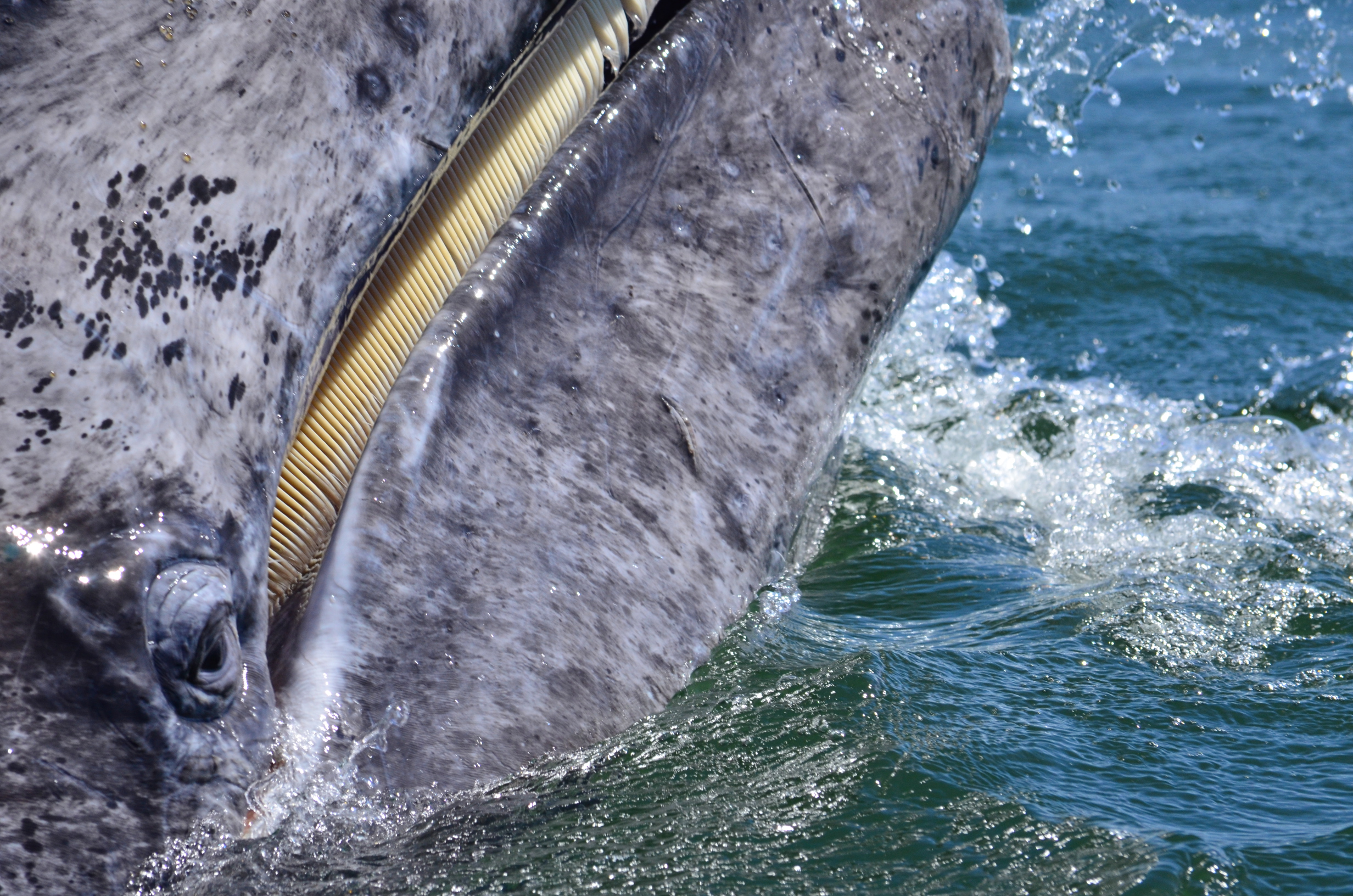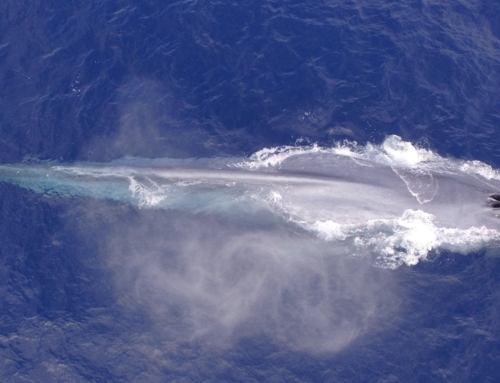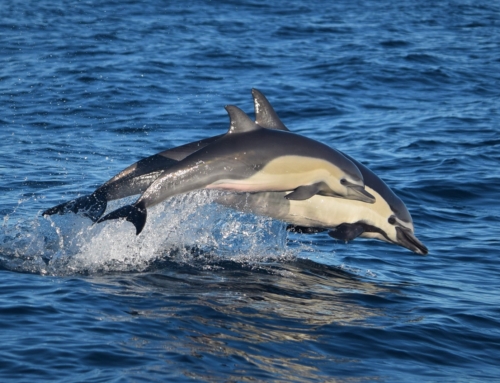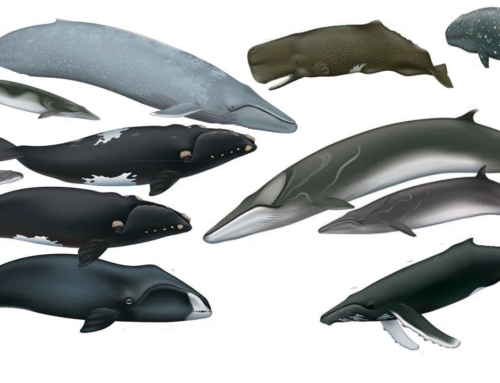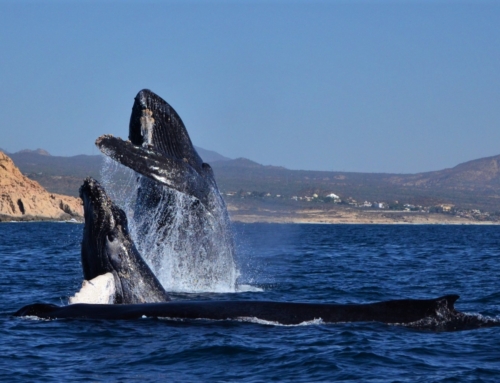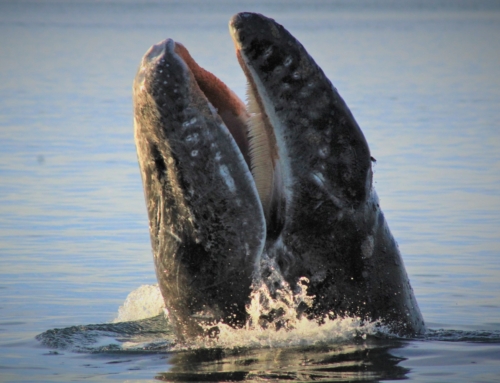The story of the Gray whale is as interesting as any. Once pushed to the brink of extinction only to bounce back spectacularly. Now they face new threats…
Whales are one of evolution’s crowning achievements, at least here on earth. They are organic submarines capable of feats that human beings can scarcely imagine. There was once probably millions more of them in the world’s oceans than there are now. We humans have hunted them for millennia and by the time we reached the peak of commercial whaling in the early 20th century most populations were decimated. Since the creation of the International Whaling Commission (IWC) and implementation of stricter laws protecting Cetaceans in many countries some species have started to recover. But in the 21st century they face new threats. The story of the Gray whale is a perfect example…
Gray Whale Facts & History:

Three Gray whales in Magdalena Bay, Mexico
Gray whales are a member of the group of whales known as baleen whales. This means that they are filter feeders who use a sieve like structure in their mouths made of keratin (the same substance as human hair and nails) to trap tiny creatures that pass through. Unlike other baleen whales who feed in open water on various small creatures, the Gray whale is a bottom feeder. Their unique style of feeding involves sifting through silty bottoms in shallow coastal areas to find amphipods and crustaceans. They feed almost exclusively in Arctic regions during the summer months of each year.
There are two populations of Gray whales, located in the North-East and North-West Pacific respectively. There is evidence of populations existing on both sides of the Atlantic in the past. Scientists believe they most likely succumbed to intensive whaling sometime during the 19th century. The fortunes of the Pacific Grays were only slightly better and have varied dramatically since. Both populations were once down to less than 1% of their original sizes, from hundreds of thousands to just hundreds by the middle of the last century.
Laws have since been put in place protecting Cetaceans in many countries while whaling has largely been replaced by whale watching. Whale populations in general have had mixed fortunes since. Some have struggled to rebound, as is the case with the Western Pacific Grays and the mighty Blue whale. Others, including some Humpback whale populations and Eastern Pacific Grays, have seen dramatic increases in numbers. The Eastern Pacific Gray whale population is back up to around 22 000 individuals. But the future is far from certain.
From the Bering Sea to Baja:
The Eastern Pacific Gray whales spend their summers feeding in the productive waters of the Arctic around the Northernmost areas of Alaska. From there they make one of the longest migrations in the animal kingdom (the longest of any mammal) down to the Baja California peninsula in Mexico. One female was recently proven to have made an over 22 000 km (14 000 mi) journey!
The Mexican waters that serve as their winter home are warmer and more hospitable to life, especially new life. The whales have visited the bays and lagoons of the Pacific side of the Peninsula for millions of years to mate and give birth to their young. These protected areas are perfect for raising young whales that are vulnerable to predators such as Orcas. Females carry a single calf at time with pregnancies lasting around 12-13 months. Calves generally stay with their mothers for around 8-12 months. The next year she will calf again meaning that females normally reproduce every two years for most of their adult lives. Both males and females reach puberty at about 6-10 years of age.
Face to Face with Giants:
Gray whales hold a number of titles. The longest migration of any mammal. The only member of their taxonomic family and genus (Eschrictiidae, Eschrictius). The ‘Devil-fish’ – because of their propensity to put up a massive fight when attacked by Orcas or whalers. And, unofficially and perhaps even surprisingly, the friendliest whales in the world. Of course there is no way to quantify that last claim in any scientific way. But if you have ever seen Gray whales in Baja or watched videos of the interactions that take place you won’t need any convincing.

A Gray whale mother & calf approach a boat in Lopez Mateos on the Baja peninsula
These leviathans are known to approach boats to within touching distance of those aboard. This phenomenon is mostly observed with mother and calf pairings. Imagine a 40 ton whale and her calf, itself still bigger than the boat, staring you in eye and breathing their vaporous breath into your face, calm as can be. It is a truly humbling experience and probably the closest humans and whales come on a consistent basis anywhere in the world.
This has led to the growth of a small but thriving industry that provides locals, mostly fishermen who own the ‘pangas’ used for the tours, with a new source of income. The season is short but it provides a great boost to the relatively remote towns in the area. The locals and Mexican government alike now believe it is in their best interests to protect the whales. It has also allowed thousands of people to have inspiring and educational experiences that help to create awareness about the ocean, its inhabitants and the plight they face.
Gray Whale Threats & Conservation
Despite their impressive comeback from the brink of extinction the Grays still face an uncertain future. The whales are currently in the midst of what scientists call a ‘mass mortality event’. Over 70 whales have been found washed ashore on beaches in the United States and Canada or floating dead in nearby coastal waters. The total number that have died is probably much greater as most sink when the die. The dead whales were on the way from Mexico back to Alaska for the summer and showed clear signs of malnutrition. There were also reports of many whales arriving late and underweight for the calving/mating season this year. This leads scientists to believe that their food source is under threat due to changes in the Arctic climate. Sea ice is retreating further every season and this is changing the dynamics of Arctic eco-systems.
Only time will tell if this will be a once off event. Like all whales the Grays also face other man-made threats. Even giants can become by-catch in 40 km (25 mi) wide nets. Ship strikes are also a danger and ocean traffic is only intensifying. But there is still hope. Protections for Cetaceans, other marine life and the ocean in general are increasing in most countries. Eco-tourism and education are making a difference as well. Nature’s messages are becoming clearer. The voices screaming for change are growing louder. Will we listen?

